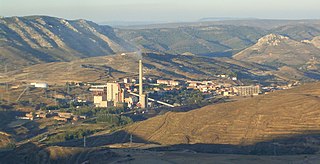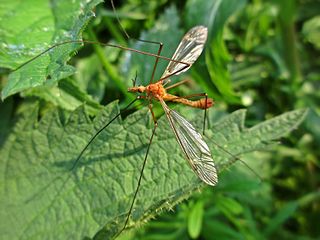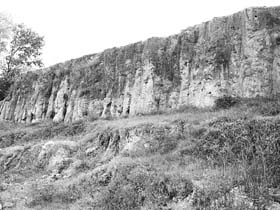
In Greek mythology, Theia, also called Euryphaessa "wide-shining", is one of the twelve Titans, the children of the earth goddess Gaia and the sky god Uranus. She is the Greek goddess of sight and vision, and by extension the goddess who endowed gold, silver and gems with their brilliance and intrinsic value. Her brother-consort is Hyperion, a Titan and god of the sun, and together they are the parents of Helios, Selene, and Eos. She seems to be the same with Aethra, the consort of Hyperion and mother of his children in some accounts. Like her husband, Theia features scarcely in myth, being mostly important for the children she bore, though she appears in some texts and rare traditions.

Woman in the Moon is a German science fiction silent film that premiered 15 October 1929 at the UFA-Palast am Zoo cinema in Berlin to an audience of 2,000. It is often considered to be one of the first "serious" science fiction films. It was directed by Fritz Lang, and written by his wife Thea von Harbou, based on her 1928 novel The Rocket to the Moon. It was released in the US as By Rocket to the Moon and in the UK as Girl in the Moon. The basics of rocket travel were presented to a mass audience for the first time by this film, including the use of a multi-stage rocket. The film was shot between October 1928 and June 1929 at the UFA studios in Neubabelsberg near Berlin.

Helius Eobanus Hessus was a German Latin poet and later a Lutheran humanist. He was born at Halgehausen in Hesse-Kassel.

Thallium (81Tl) has 41 isotopes with atomic masses that range from 176 to 216. 203Tl and 205Tl are the only stable isotopes and 204Tl is the most stable radioisotope with a half-life of 3.78 years. 207Tl, with a half-life of 4.77 minutes, has the longest half-life of naturally occurring Tl radioisotopes. All isotopes of thallium are either radioactive or observationally stable, meaning that they are predicted to be radioactive but no actual decay has been observed.
Bismuth-209 (209Bi) is the isotope of bismuth with the longest known half-life of any radioisotope that undergoes α-decay. It has 83 protons and a magic number of 126 neutrons, and an atomic mass of 208.9803987 amu. Primordial bismuth consists entirely of this isotope.

The Escucha Formation is a geological formation in La Rioja and Teruel provinces of northeastern Spain whose strata date back to the late Aptian to middle Albian stages of the Early Cretaceous. Dinosaur remains are among the fossils that have been recovered from the formation.

Tipula hortorum is a species of cranefly which is widespread throughout the West Palaearctic.It is a woodland species.

Tipula lunata is a species of cranefly which is widespread throughout the Palaearctic.

Tipula unca is a species of cranefly.

Bara is a village in Rupnagar District in Punjab, India. The village has mainly two Jatt Sikh surnames Chakkal and Heer and lies on the Rupnagar-Morinda Road at the left bank of a seasonal monsoon rivulet called Budki Nadi, about four kilometers south-west of the city Ropar and 40 km (25 mi) northeast of Chandigarh on National Highway 205 (India) (NH-205). Bara is the site of significant archeological excavations connected with the Indus Valley civilization. It has some evidence of being home to a culture that was a pre-Harappan strand of the Indus Valley Civilization. Baran and Harappan cultures may have intertwined and coexisted in some places, such as Kotla Nihang Khan, also in modern-day Punjab.

Sylvicola fenestralis, the window gnat, is a medium gnat (6–10 mm) of the family Anisopodidae. It is found in the Palearctic.
The Colombo Journal was a short-lived English-language bi-weekly newspaper in Ceylon. The newspaper started on 1 January 1832 with George Lee as editor. George Lee was the Superintendent of the Government Press and later Postmaster General. The newspaper had the support of the government and Governor Robert Wilmot-Horton. Apart from Horton and Lee other senior government officials who wrote for the newspaper included the governor's private secretary Henry Tufnell and George Turnour. Criticism of the British government led to the newspaper being closed by the Colonial Office on 31 December 1833.

Chaoborus flavicans is a species of fly in the family Chaoboridae. It is found in the Palearctic.

Chironomus anthracinus is a species of fly in the family Chironomidae. It is found in the Palearctic.
Dorylomorpha xanthopus is a species of fly in the family Pipunculidae. It is found in the Palearctic.
Pipunculus campestris is a species of fly in the family Pipunculidae. It is found in the Palearctic.

Terellia ruficauda is a species of fly in the family Tephritidae, the gall flies. It is found in the Palearctic. The larvae feed on Cirsium arvense.

Nephrotoma flavescens is a species of fly in the family Tipulidae. It is found in the Palearctic.

Cricotopus bicinctus is a species of fly in the family Chironomidae. It is found in the Palearctic.

The Anwar Cabinet was the fifth cabinet established by the State of Pasundan. It was composed of 11 ministers. Its term of office ran from 11 to 23 January 1950.
















